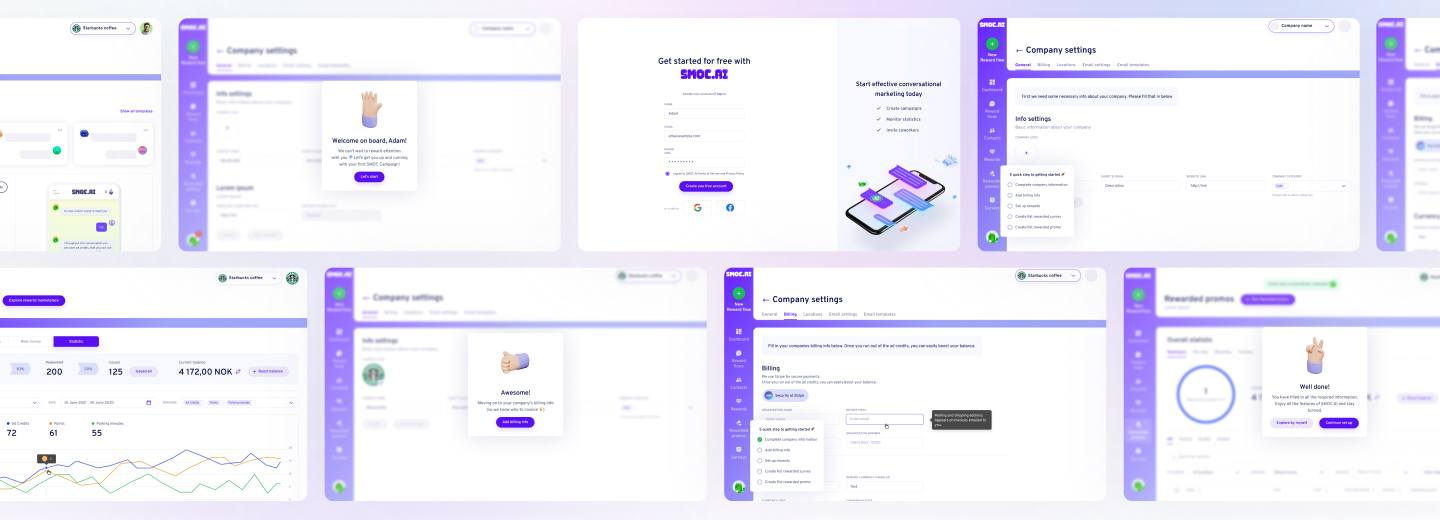Making models of the finances isn’t the most entertaining part of the startup launch, but it is also one of those things that turn a good idea into a real business. Many founders put it off because they believe they can figure it out later. However, when the time comes to negotiate with investors, hire a team, or even determine whether the business can survive beyond month six, those figures suddenly matter. A lot.
The tricky part of how to build a financial model? Theoretically, it is no wonder that it is overwhelming to create a financial model. There is no universal template, and Googling it usually results in complex spreadsheets that appear to be a mess than guidance. However, there is some good news: it doesn’t need to be so. A good model doesn’t come up with all the numbers perfectly right, but one that gives a realistic, flexible roadmap of what is known at the moment and what is likely to happen.
This guide takes a down-to-earth and step-by-step approach to what is a financial model and the fundamentals of start-up financial modeling. It may not matter whether you are aiming to pitch your investors or simply wish to make better decisions relating to growth and cash flow, but it’s worth getting the foundation right from the beginning.
what’s in the article
- What is a Startup Financial Model?
- How to Create a Financial Model
- Why is Building a Financial Model Important for Startups?
- Conclusion
What is a Startup Financial Model?
At its core, a financial model for a startup is simply a detailed and informed guess at how a business is going to earn money, spend money, and (hopefully) grow over time. It is typically developed in a spreadsheet, and presents important estimates such as revenue, costs, profits, and cash flow – usually in the next 3 to 5 years. It is like a map of your business, but instead of roads and landmarks, there are numbers and assumptions.
But this isn’t all about number crunching as an end in itself. It is a good financial model that will allow founders, as well as potential investors, to get a picture of whether the idea holds water. It addresses the questions of the big picture, such as: Can this business be scaled? At what point will it break even? What amount of money will it require to survive the initial stages?
At this point, it is important to say that every financial model isn’t perfect. Actually, the majority of projections at the initial stage of startup validation turn out wrong in some way (and this is acceptable). It is more important what lies behind these figures: are the assumptions reasonable? Are they coherent? What happens in case things don’t go as planned?

Looking to Build an MVP without worries about strategy planning?
EVNE Developers is a dedicated software development team with a product mindset.
We’ll be happy to help you turn your idea into life and successfully monetize it.
How to Create a Financial Model
So how to build a financial model for a startup? Creating a financial model is a daunting task that can be a huge deal, but it doesn’t have to be. The trick is to make it into small steps. No need to be too fancy at the beginning. The most important thing is to be clear, consistent, and rational. This is how you can do it without losing your mind.
1. Define the Purpose of the Model
To understand why the model is being built, it is necessary to clarify the purpose before plunging into formulas or forecasts. Is it internal planning? To get investors? Perhaps it is to take out a bank loan or even to know the runway? The objective influences it all, including how detailed it should be and the type of outputs that the model must consider. There is no reason to develop a 20-tab spreadsheet when all you want to know is your breakeven point.
2. Build a Structured Framework
Begin with a clear and basic framework of how to build a financial model in excel. Consider your model as a house, and you are going to need a strong foundation. In most cases, it implies structuring your spreadsheet into coherent parts: assumptions, revenue, costs, profit/loss (P&L), balance sheet, cash flow, and KPIs. By keeping everything labeled and clean, hours can be saved later because of confusion.
3. Project Revenue Streams
Here’s where things get interesting – and subjective. Predictions of revenue can be problematic in the sense that it is based on a combination of market research, the best guesses, and a smidgeon of optimism. Decompose the revenue model of the business: product sales, subscriptions, services, etc. Be precise and assume based on data where you can, even if it’s rough data. It isn’t going to help anyone to make wild guesses.
4. Estimate Operating Costs & Expenses
It is time to come to grips with what is needed in order to keep the lights on. This covers all costs, including salaries and rentals, to software subscriptions and marketing expenses. It assists in distinguishing between fixed and variable costs. You can never ignore the little things – they accumulate. It is best to be a little over-estimating, as opposed to being taken by surprise later.
5. Factor in Capital Requirements
What is the amount of money the business requires to start and keep going? This section includes investment in the beginning, buying of equipment, developing the products, and anything that is a one-time or large upfront cost. When you want to raise funds, state the amount and what you want to do with it. VCs will ask.
6. Incorporate Working Capital & Cash Flow
A business venture may be profitable in terms of paperwork, and yet it goes out of cash. This is the reason why it is important to model working capital (accounts receivable, accounts payable, inventory). A decent model will indicate when the cash is coming in and when it is going out. Young companies can be killed or saved by the timing of the cash flow.
7. Include Key Metrics and KPIs
Investors (and savvy founders) prefer not to see only revenue and costs. Include the metrics that indicate the health of the business: customer acquisition cost (CAC), lifetime value (LTV), gross margin, burn rate, and so forth. Select the KPIs that are relevant to your industry. don’t insert numbers just because they are good to look at.
8. Model for Taxes and Compliance
It isn’t the most exciting thing, but it is essential. Be sure to include taxes, local regulations, payroll requirements, etc., anything that may impact the net profit. You don’t have to be a tax expert, but this section should not be overlooked, as you may be in store for some unpleasant surprises later.
9. Run Scenarios and Sensitivity Analysis
Due to the fact that, well, things seldom go according to plan. To stress-test the model and anticipate speed bumps ahead, it is good to run scenarios (best case, worst case, most likely). Take a couple of critical variables and change them, and watch their waves flow throughout the rest of the business. It isn’t about the future but being prepared to meet it.
10. Review, Share & Iterate
After you have created the model, don’t set it and forget it. Take your co-founder, mentor, or advisor through it. Is it logical? Are these assumptions all too rosy? Too conservative? Blind spots can be observed by fresh eyes. And keep in mind that your model isn’t set in stone. Your numbers should change as the business changes.

Proving the Concept for FinTech Startup with a Smart Algorithm for Detecting Subscriptions

Scaling from Prototype into a User-Friendly and Conversational Marketing Platform
Why is Building a Financial Model Important for Startups?
For many founders, the idea of getting into financial modeling for startups is like going to a math lesson that you don’t enroll in. But the thing is as follows: the existence of a financial model isn’t one of those things that are nice to have in a startup, but rather an essential component of building that can survive, scale, and win.
Of course, it isn’t as thrilling as putting your product on the market or watching your first client walk through the door, but the model will help pay the bills and stay centered when everything goes to hell (it will). It is like having a map, not only to investors but to yourself, to determine where you are going and what it will require to accomplish this.
Set and Monitor Business Objectives
An entrepreneurial venture that lacks objectives is equivalent to a rudderless ship. A good financial model isn’t one that merely puts numbers on a page, but adds structure to your vision. This is because by having some defined goals, although this could be in terms of revenue milestones, monthly active users, or a decrease in customer acquisition costs, you have provided a track to run on. And, equally, it makes you keep track, are we going the right way, or are we burning fuel without going anywhere? You can much more easily pivot on catching warning signs early, and a financial model is one of the first places those warning signs are likely to appear.
Maintain Financial Discipline
There is a thin line between ambition and the resources in early-stage startups. You can be easily tempted to blow things out of proportion in the name of growth, especially when there is a new pot of money in the bank. However, when you aren’t monitoring your expenses and estimations, then it may run out of control faster than you may have anticipated. A financial model is a kind of reality check. It makes founders pose the tough questions: Are we in a position to make this hire at this period? What would occur in the case of a two-month decline in revenue? It isn’t a question of pinching pennies, but with a clear view of where the money is going, it becomes a lot easier to be lean, smart, and in control.
Attract and Convince Investors
Investors don’t invest in ideas, but rather they invest in scalable businesses. And no matter how good the pitch, the lack of a financial model is just telling stories with no spine. You have a model that demonstrates you have considered the economics of your idea, the cost of acquiring a customer, how long it will take to break even, and how large this can become. It needs to be considerate, rational, realistic, and it doesn’t have to be flawless (most aren’t ). It can convert a maybe to a yes, or at least give you a second meeting when it is done well.
Plan for Growth and Uncertainty
Start-ups are in the world of the unknown. One month you are flying high, and the next one you are in panic mode trying to understand why churn increased. A financial model won’t show you what will happen in the future, but it will help you get ready. By assuming various possibilities, best case, worst case, and somewhere in the middle, you would have a better idea as to what you can do when things go out of script. Planning to expand your team by the coming year? Great – your model will tell you how that will affect your burn rate. Considering going into a new market? You will understand what kind of buffer you will require to keep your head above water in case it takes more time to get off the ground.
Understand Cash Flow and Runway
In the beginning of building a startup financial model, cash is king. You might have a fantastic product, an awesome team, and a swelling customer base, but when you run out of money, the game is over. A decent model will enable you to monitor your burn rate and runway, that is, how quickly you are spending and how long you will last. It allows you to prepare another fundraiser, cut expenditures, or change strategy, in case it is necessary. There are several start-ups that have crashed, not because they didn’t have potential, but because they didn’t see the wall coming until it was too late. The startup finance model is the thing that helps you not to fly blind.
Support Better Decision-Making
Finally, a financial model is a tool for smarter decisions at the end of the day. When it comes to how to know when you should scale, whether to bootstrap or fundraise, or even if you can afford to hire that additional developer, having hard numbers to support whatever you think makes you feel confident. It doesn’t imply that all the decisions that you will take will be perfect (quite the contrary), but you will be making the decision with your eyes open, not your gut only. The more grounded your decisions, the better your odds of building something that lasts. It’s core idea of how to create a financial model successfully.

Need Checking What Your Product Market is Able to Offer?
EVNE Developers is a dedicated software development team with a product mindset.
We’ll be happy to help you turn your idea into life and successfully monetize it.
Conclusion
Ultimately, it isn’t about getting all the numbers right in your financial model of a startup, but it is about coming up with a realistic roadmap that can assist in decision-making and ensure that your business is on track. It is such a tool that makes hope and ambition into something real and attainable. And when it gets too much, that is perfectly fine; even the most brilliant founders began at a place that was messy and not perfect.
In case you are one of the people who want to eliminate the guesswork, you can find all the differences in working with EVNE Developers. We are familiar with all ins and outs of financial modeling offer startup consulting services so you can rest assured that you will have a solid, tailor-made model in place without the headache.
Therefore, put on your sleeves, don’t be scared to get your hands dirty with the figures, and keep in mind: a good financial model is all about improvement and not perfection. The proper strategy and perhaps with some assistance from the experts, will enable you to feel confident in the face of anything that may come.
Startups require proper forecasts to make reasonable plans and not have any bad surprises, and to assuage investors that they have their act together. Unless there is a clear understanding of where money is coming in and where it is going, one is like flying blind. It is a good idea to have solid numbers that can keep the founders focused and also make better decisions along the way.
At the very least, a startup financial modeling must address revenue forecasts, operating expenses, cash flow, the capital requirement, and main performance indicators such as customer acquisition costs or burn rate. It is the pulse of your business plan.
Having to operate under such uncertainty and a lack of information. It is also difficult to create a reliable model when the startup has to make educated guesses and doesn’t have historical figures. And it isn’t easy to keep it simple and detailed at the same time.
Financial models are prospective and situation-specific: they are planning and testing tools. Your business startup financial models are the real figures of your business till now. Models aren’t only measures of the past, but also predictive and prospective agents.
Absolutely. SaaS, e-commerce, hardware, services, and all startups are different, and they all have their revenue streams and their own cost structures as well. The one-size-fits-all approach won’t stand. This is where specialists such as EVNE Developers enter the picture, they can do customization of models to suit your kind of business.
Startups in their early stages find it most appropriate to use a simple and flexible cash flow and runway model. It should be easy to revise and permit the rapid testing of scenarios. This simplicity will keep founders on track and avoid losing track of the most important metrics.

About author
Roman Bondarenko is the CEO of EVNE Developers. He is an expert in software development and technological entrepreneurship and has 10+years of experience in digital transformation consulting in Healthcare, FinTech, Supply Chain and Logistics.
Author | CEO EVNE Developers


















